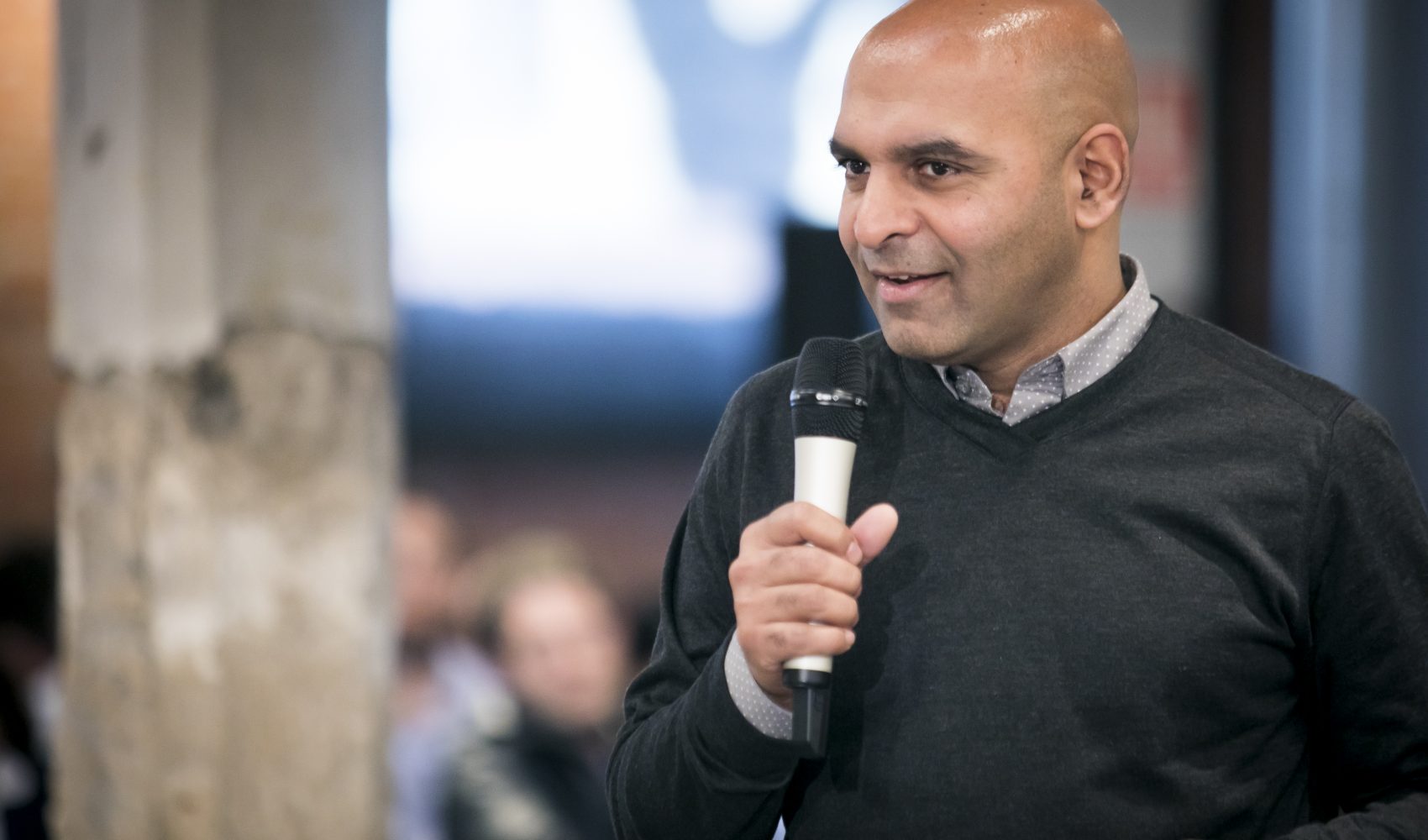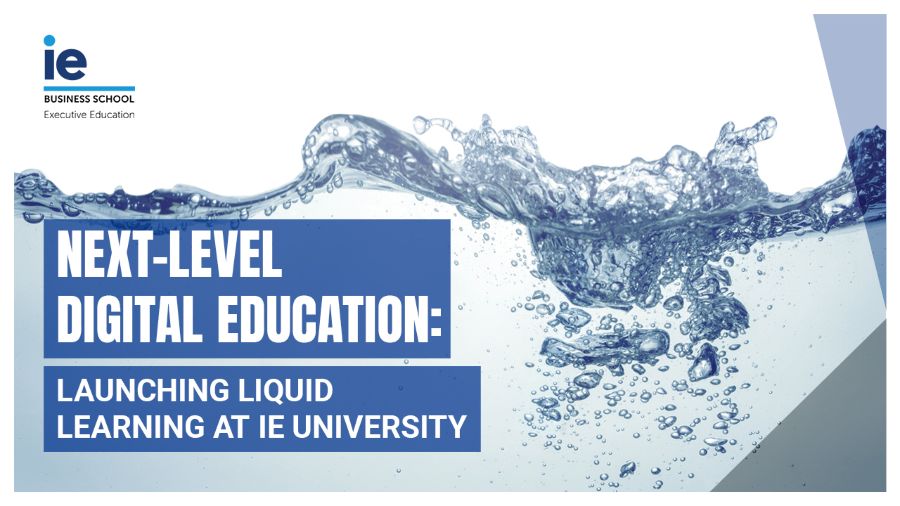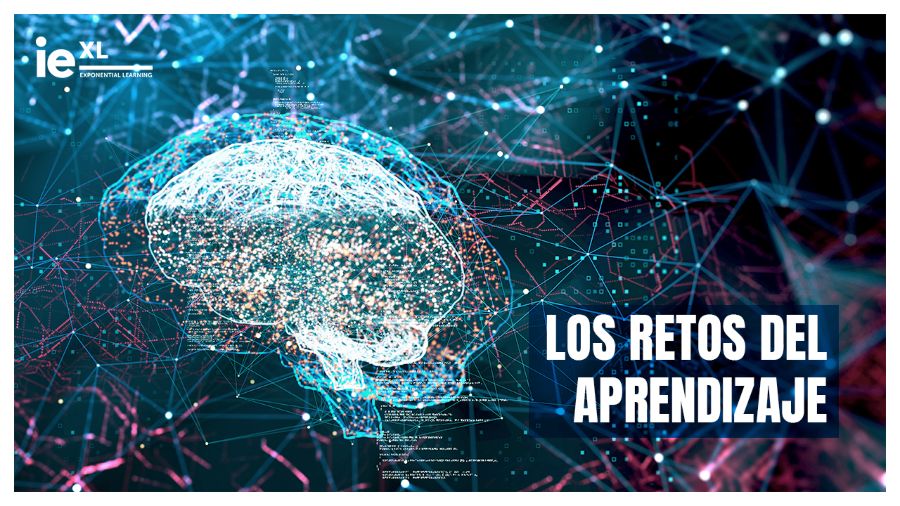A taste of Innovation for Growth at IE Global Alumni Weekend Madrid

During the recent Global Alumni Weekend at IE’s Madrid campus, Balvinder Powar, Professor at IE Business School and one of the two experts you’ll hear from in the Innovation for Growth HiOP gave a master class called Leading Through Technology: Attitude for Success.
The first jumping-off point that he started the talk with is a term that is at the heart of the Innovation for Growth HiOP: VUCA.
What exactly does VUCA stand for?
- Volatile
- Unpredictable
- Complex
- Ambiguous
In a VUCA world, it is imperative to manage change, team, and conflict. As the volatility in the world around us always pervades us, there’s a statistic that Powar put in his slide deck that puts the importance of the human factors into perspective.
According to the Carnegie Institute of Technology,
85% of your financial success is due to your personality and ability to communicate, negotiate, and lead. Shockingly, only 15% is due to technical knowledge.
So, where does change come from? After watching this video from Gerd Leonhard,
it continued to cement the importance of human-only traits as we continue to train.
The next segue related to innovation, which can be a controversial subject for some, is the definition of innovation itself. It is a word we throw around incessantly, but what is at the heart of innovation?
According to Powar, it’s a three-step procedure:
- First, we start off with the idea
- Then, we go ahead and test
- And we end with validate
While some consider innovation to be about adaptation, what we often think about when it comes to innovation is the idea of disruptive innovation, which was the next thing to be tackled in the master class. In The Innovator’s Dilemma, the book written by Clay Christensen that defined the term explained that
“a disruptive innovation initially offers a lower performance according to what the mainstream market has historically demanded. At the same time it provides some new performance attributes, which in turn makes it prosper in a different market.”
It means that the key to disruptive innovation is “competing against the non-consumer.” As evidenced by Christensen’s work, innovation is something organic and continuous. It also is a mindset. This brings us back to the importance of the human-only traits as the predictor of success and what brings us over the hump to progress.
With that in mind, we always should think that:
- Being different from the crowd is never easy
- Disruptive thinking does not always rely on disruptive technology
And
- Everyone can use creative approaches/techniques to solve challenges
After discussing his projects, Aerodron and Booster Industries, we dove into Bal’s leadership learnings. In summary, they relate to the soft skills that are fundamental for success but may not get as much renown as the hard skills we are constantly after. Concerning Innovation for Growth, many personnel management and conflict-resolution skill sets are paramount. Besides this, which is what HiOPs is all about, is kaizen, the Japanese concept that is all about continuous improvement. The HiOP philosophy of lifelong learning could be a manifestation of this idea.
Yet, we still have a burning question: what is the key for people to succeed? The key, or as Bal put it, “the secret sauce,” is your team because they’re the resource you can best maximize to endure all the volatility that’s out there around the world. It lies in the dilemma of intrinsic versus external motivation. External motivation, or extrinsic motivation, according to Kendra Cherry, “…involves engaging in a behavior in order to earn external rewards or avoid punishment.” Intrinsic motivation, in contrast, is “…the behavior that is driven by internal rewards.” Intrinsic motivation is about the things that give you the most personal satisfaction to yourself. So, that means there is no reward involved with taking action. For example, you can write a blog post because somebody will pay you a good amount of money (let’s say, $100), which is external motivation. But, if you write for a travel blog about the best gluten-free restaurants in Italy because you want to help celiacs enjoy Italian cuisine, and there is no financial compensation involved, you would be writing it for reasons related to intrinsic motivation.
The keys to tapping into this are to figure out the purpose, which would be the contribution; autonomy, implying trust; and mastery, which would be about making progress.
Ready to learn more from Balvinder Powar? Get ready as you listen to him talk to Mark in the next Innovation for Growth intake.



